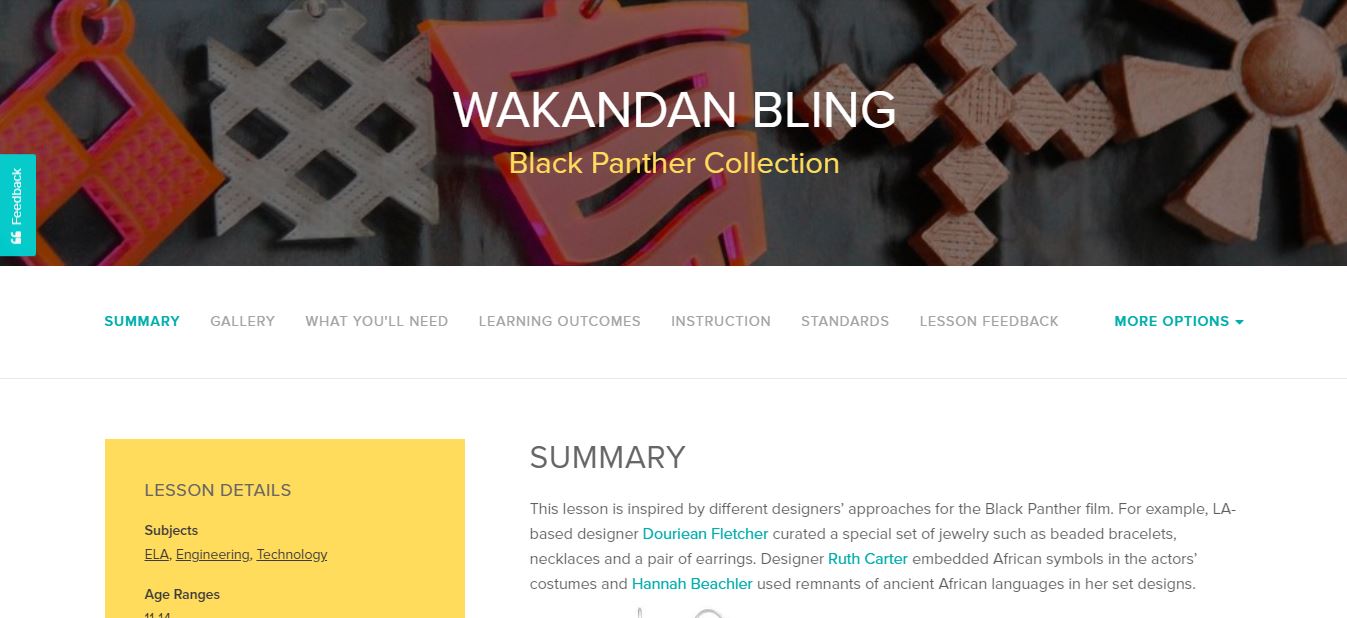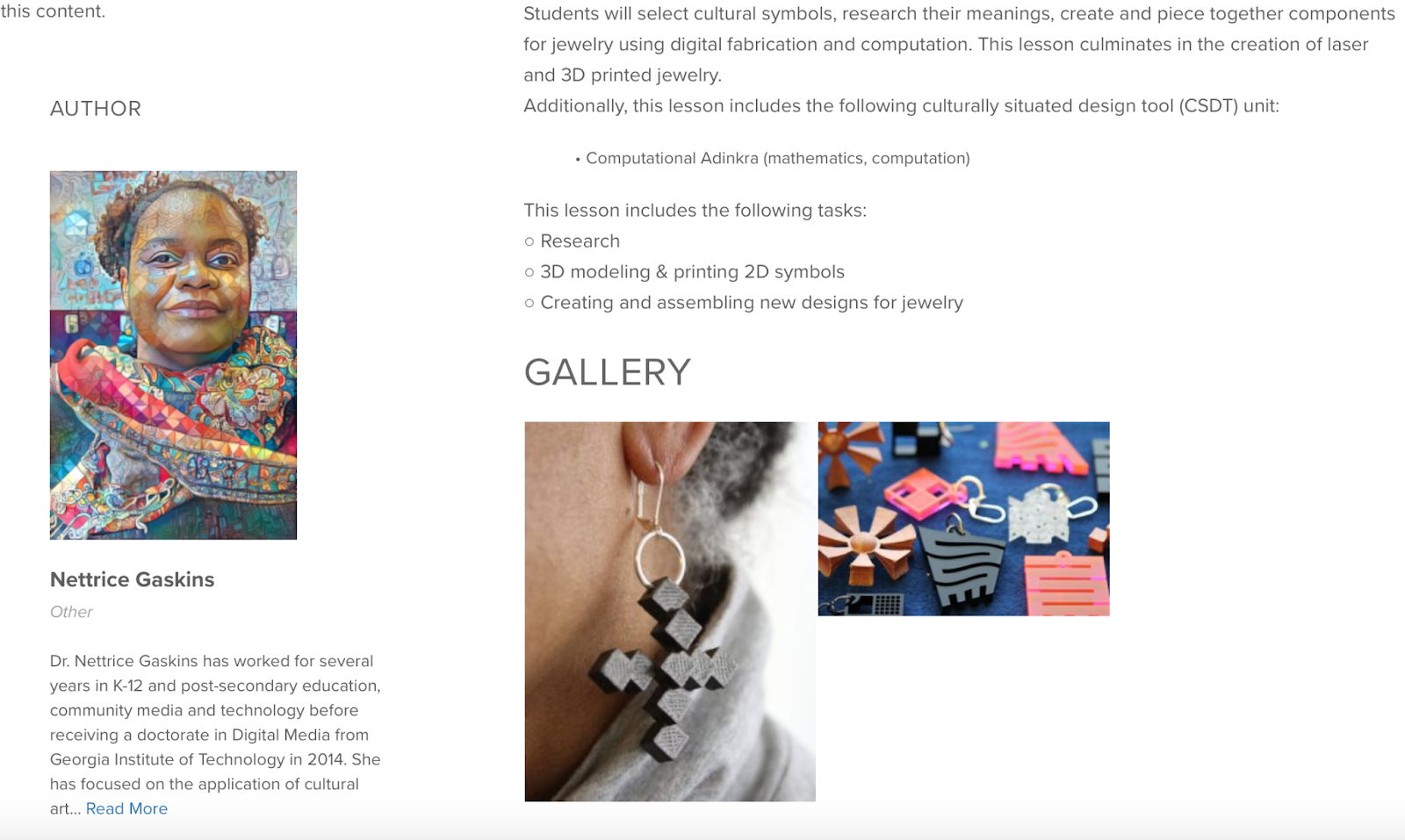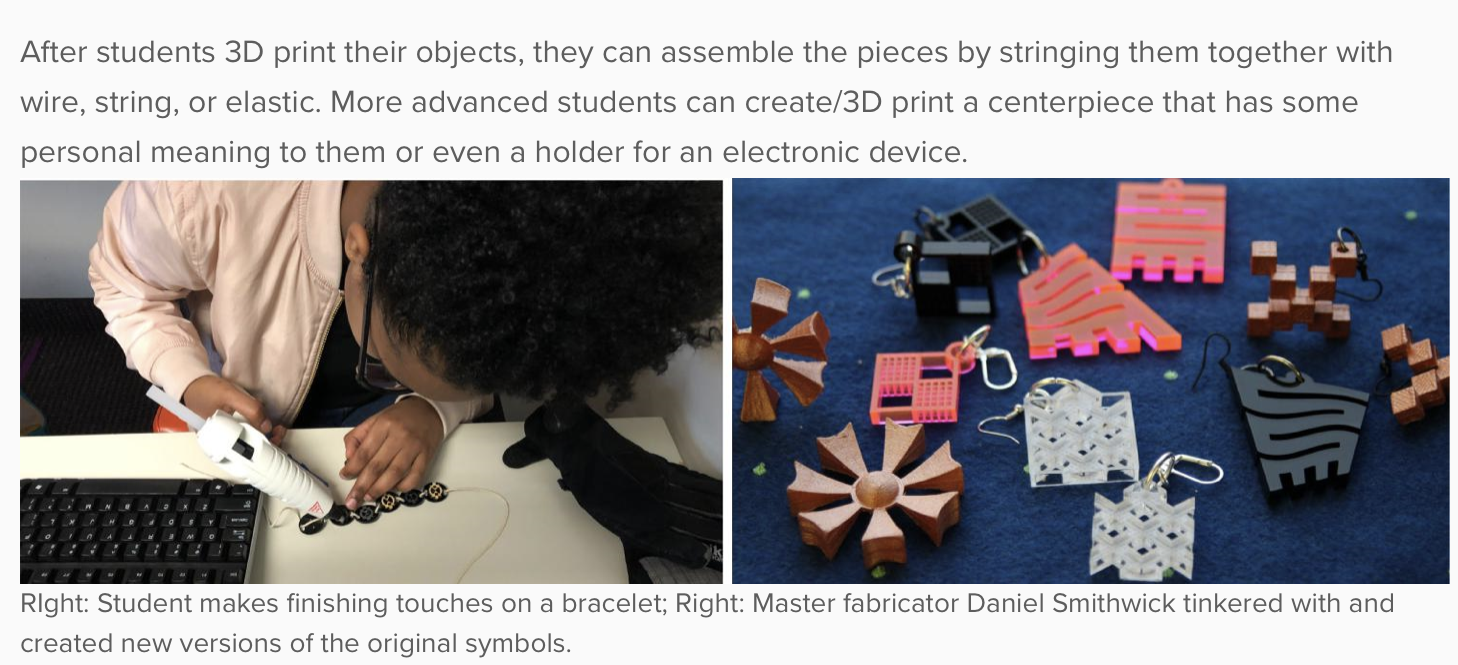Desmond Hearne Morrey is an intern at the Fab Foundation. His role includes reviewing and featuring SCOPES-DF lessons for the community blog. Click here to read part 1 and part 2 of this blog series.
Hi all, I’m back with one last post to talk about something I’m calling “pedagogical telos”, or the ends behind teaching and education. The ways we teach, design curriculum, and evaluate students all reveal different things about our unique pedagogical teloi. We should be mindful of the implied ends or goals of our curriculums, because while some are productive and helpful to students, others are not. Here, I’ll showcase a lesson that I think is mindful of the goals it commits itself to and, as a result, is a good lesson. I’ll also discuss why I think this framework for talking about lessons is important and how we can use it as educators.
Featured Lesson: Wakandan Bling by Nettrice Gaskins
Nettrice Gaskins’ lesson Wakandan Bling is an exploration of adinkra, using digital fabrication technology, particularly in the context of the movie Black Panther. Adinkra are visual symbols that represent concepts or aphorisms. They originated in Ghana and are used by the Ashanti and Baoulé people. In this lesson, students are introduced to cultural symbols in Black Panther, and use digital fabrication tools to create their own Wakandan bling, centered in an understanding of adinkra.

Wakandan Bling is my favorite of the many lessons on SCOPES-DF that are situated in a culturally specific craft and one of my favorites on the site as a whole. You can tell by looking at the lesson that it’s meant to do more than just teach students the basics of 3D printing. It’s also meant to center Black cultural perspectives in the classroom, encourage aesthetic exploration, and, yes, help students develop the technical skills regarding 3D design technology. Dr. Gaskins’ pedagogical telos are not only the acquisition of knowledge and practical skills but also encourage students to explore cultural practices that are not usually featured in the classroom.

Nettrice Gaskins’ lesson showcases the types of goals we should be reaching for when we’re creating curriculum. Whenever I see lessons that are geared toward exploration, creation, and empowerment, I know that those are the lessons that are going to be both engaging to students and most helpful to them.
Take your lesson to the next level: Mindfulness towards pedagogical goals.
In high school, I took a required course in personal finance. What struck me was the disconnect between the school’s goals and the goals of the personal finance course itself. The course was a slog. It was lesson after lesson about things that I could have googled and learned about in half the time. Everyone else I talked about this class to agreed. The goal of the class was to satisfy a district requirement for a course credit, not to teach students.

Most traditional STEM courses teach math and science as a series of facts. They’re structured as lectures on the current models created by the scientific community or equations considered to be of mathematical significance. This pedagogical telos, which is built around getting students ready for high stakes tests, helping them to conform to district standards, and situating them on a career path, deprives science education of its explorative and human aspects. It leaves students either disliking science and math class or stuck with a lot of “science facts” floating around their heads that are useless without context.
With this in mind, I’d encourage lesson creators and teachers to prioritize explorative, and empowering teloi, as opposed to practical or teach-to-test teloi. While I believe practicality and facts about the world are important to learn, they come up naturally through lessons like Wakandan Bling that support a more holistic learning goal. I see a lot of lessons on SCOPES-DF that do this really well, as well as lessons that could if they just reached a little further. Concrete ways to do this might include framing your lesson design to make it culturally relevant to students.
Final Thoughts
It’s been an interesting experience being an intern at the Fab Foundation, even during the pandemic. I think there’s a lot of space in areas like digital fabrication to explore teaching that not only puts tools of creation in students’ hands but also empowers and inspires them. Exploring what kinds of lessons you all have thought of and shared on SCOPES-DF has been fascinating, and I’ve learned a lot, especially regarding digital fabrication and culturally relevant pedagogy. I hope that any insight that I’ve had over these past few posts is helpful to this community of educators and makers.
Tagged: 100, Bling, Desmond Hearne Morrey, Featured Lesson, lesson review, Nettrice Gaskins, One hundred, review, Wakandan

